February 2024
|
DR LISA ROTHMAN, LECTURER AT THE UNIVERSITY OF THE FREE STATE, |
 |
Sclerotinia can be regarded as one of the most devastating diseases of oilseed crops (canola, soybean and sunflower) in South Africa. Cabbage, lettuce and weeds are also crops that can be affected by the pathogen, Sclerotinia sclerotiorum.
Scouting for diseases caused by S. sclerotiorum can be done by investigating your fields for signs of the pathogen and symptoms of the disease. Understanding the life of the pathogen and its interactions with the host plant and environment will help you more easily notice the characteristic signs of S. sclerotiorum and symptoms of sclerotinia head and stem rot.
Signs are the visible pathogen structures observed on the host or in the environment, where symptoms are the host plant’s reaction to disease caused by the pathogen. A susceptible host interacts with a viable virulent pathogen in an environment that favours disease development, which is resulting in signs and symptoms right through the growing season.
SYMPTOMS
Sclerotia
Sclerotia are black and hardened survival structures, normally found within and/or on infected soybean stems, sunflower heads or sunflower stems. Sclerotia can appear as little ‘rat droppings’ (Figure 1A), clumped (Figure 1B) or honeycomb-shaped (Figure 1C). The shapes form due to the host organ on which the pathogen established.
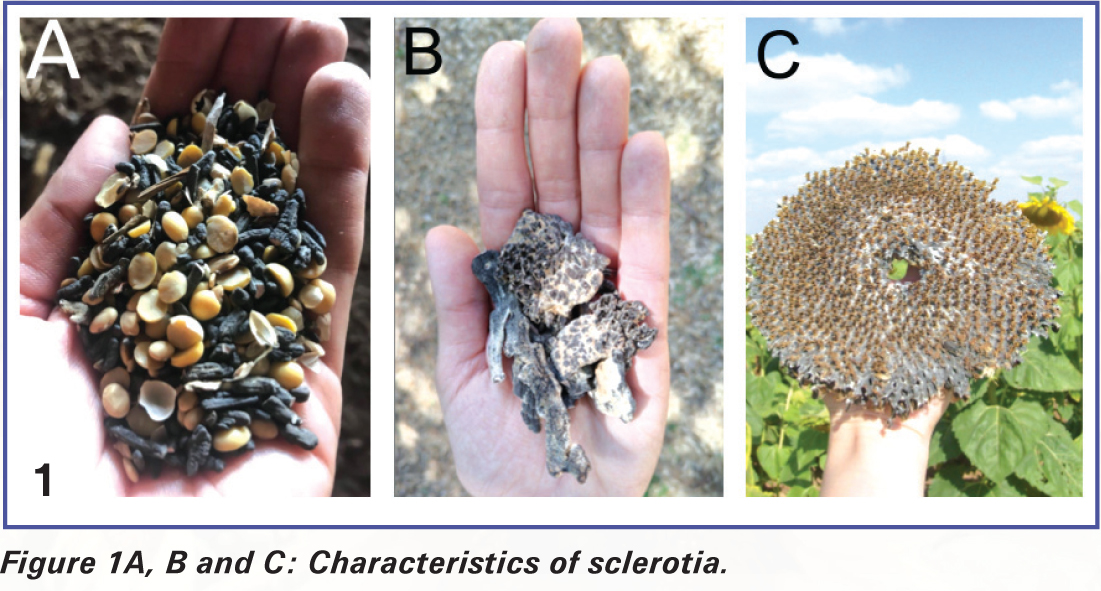
In cases where severe sunflower head rot occurs, sclerotia fall onto the ground (Figure 2A) after complete shredding of the sunflower head (Figure 2B). Sclerotia collected from sunflower field trials ranged between 8 cm and 18 cm diameters under high disease pressure.
During harvest, the large sclerotia break into smaller pieces and are dispersed throughout the field. Before the start of the planting season, scout your fields for the survival structure of S. sclerotiorum. This will indicate where there is a risk for the development of Sclerotinia diseases, as there is potential for the inoculum to develop.
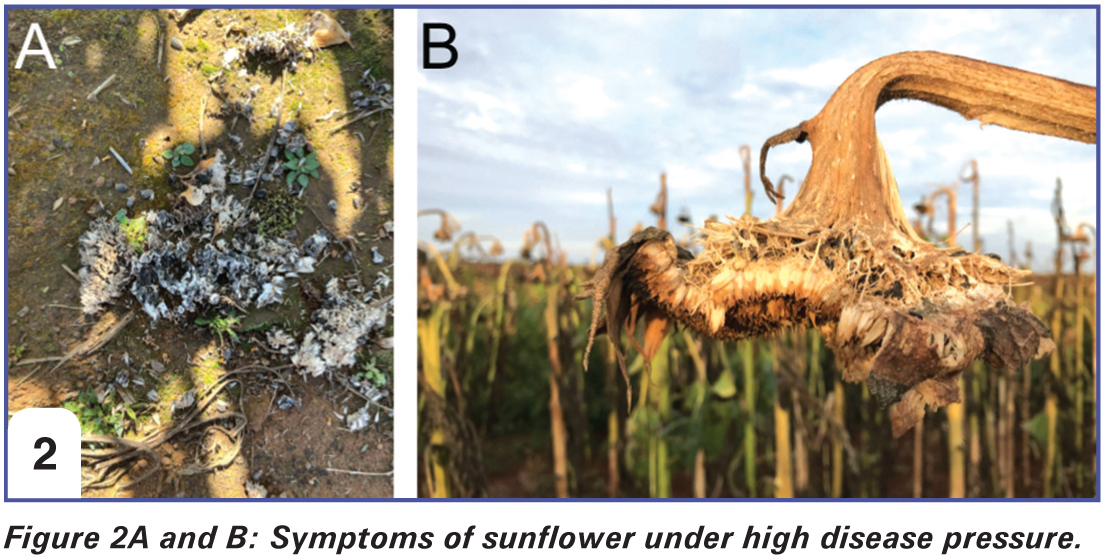
Apothecia
Apothecia are trumpet-like structures (Figure 3A) that germinate from sclerotia on the ground when the environmental conditions are favourable for disease development (cool, high relative humidity and free moisture).
As apothecia germinate, they release ascospores that are dispersed by air currents (Figure 3B), which land on the susceptible tissue of the host plant to initiate infection. Spores then germinate, which enables them to enter the host through natural openings (plant flowers) or wounds and grow into host tissues.
Sclerotia may also germinate to infect the roots via mycelia, which are the white cottony filament of the fungus. When scouting for apothecia, try and avoid confusing apothecia with non-plant-pathogenic fungi such as the common bird’s nest fungus (Figure 4). In addition to regular in-field scouting for diseases, drone or satellite images during the season may be useful as an overview of the field.
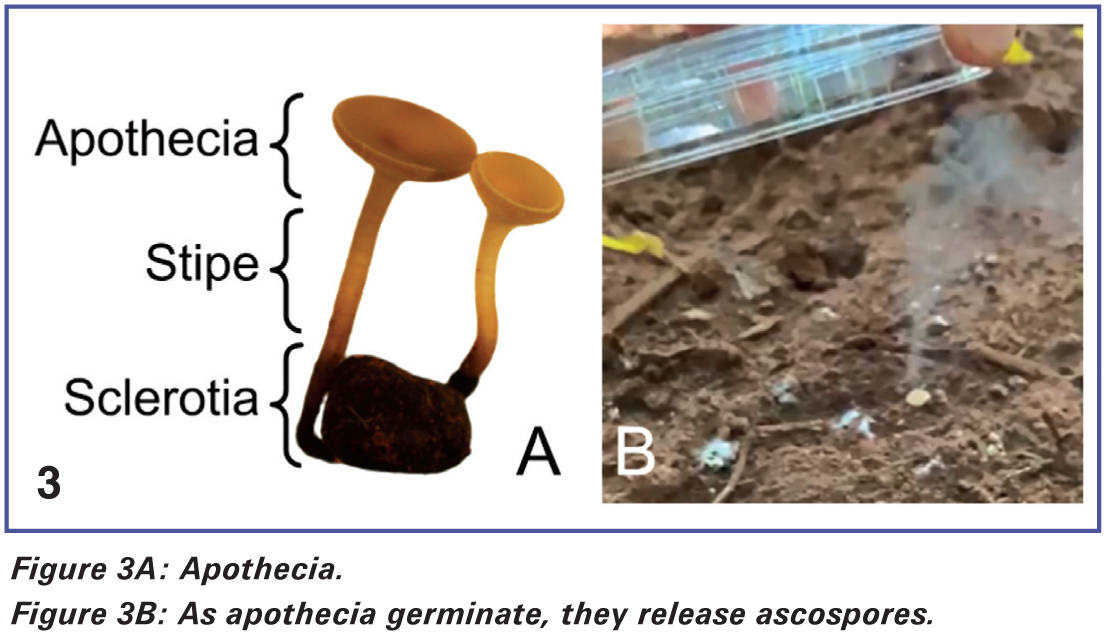
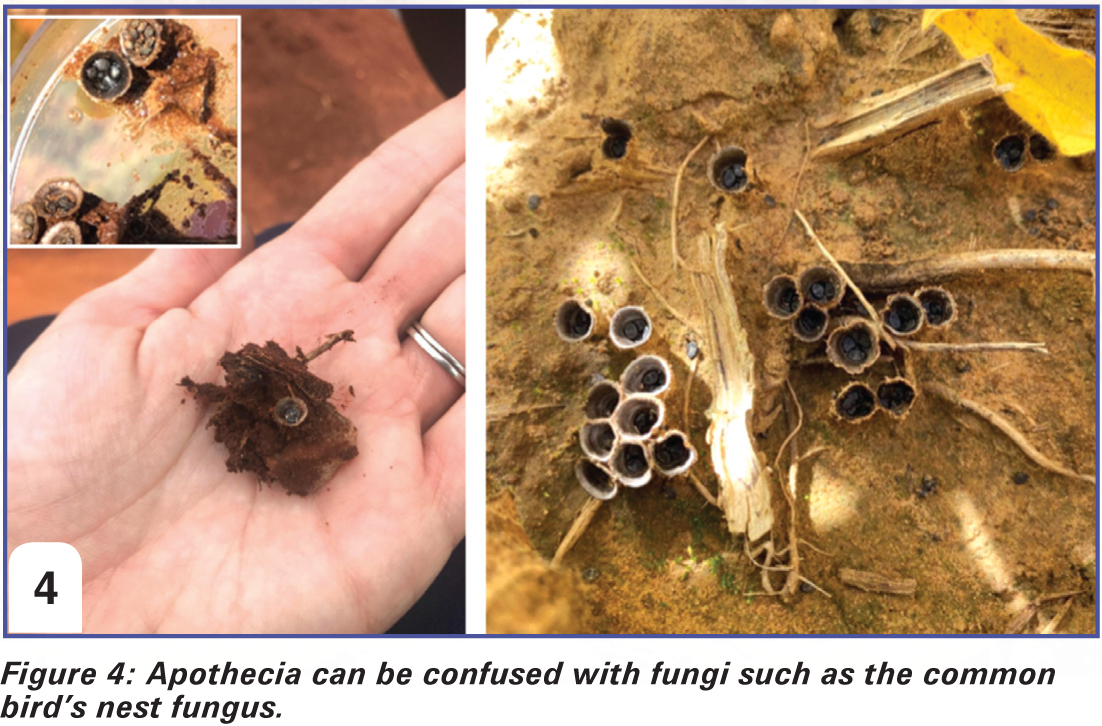
Wilting and water-soaked lesions
Wilting is the start of the symptoms associated with initial infection as the pathogen takes over the plant material, killing more of the plant tissue. Successful disease establishment is marked by water-soaked lesions (Figure 5A) on stems and heads caused by cell-wall-degrading enzymes produced by S. sclerotiorum.
White fluffy mycelia
Advanced disease signs are associated with white fluffy masses, where diseased host tissue is destroyed by the fungus (Figure 5B). Once symptoms are present in the field, a record of infected areas or ‘patches’ should be mapped out and maintained, allowing the producer to target future scouting for apothecia, as sclerotia will develop as the disease progresses or the season ends.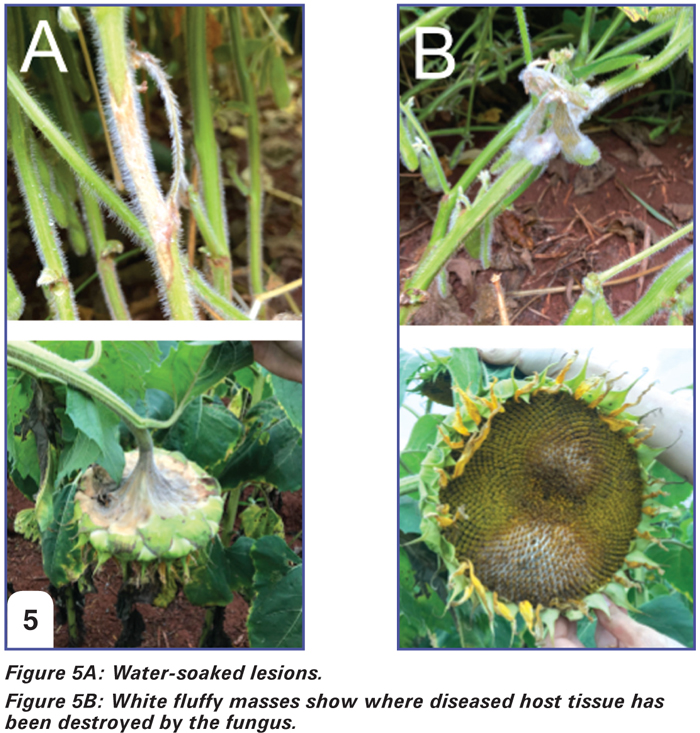
Sclerotinia disease management
There is no silver bullet in Sclerotinia disease intervention – however, integrated pest management (IPM), which includes a combination of agronomic, biological and chemical strategies, increases the chance of successful disease management. Select and combine agronomic tactics that suit your production system – these that promote plant health, mitigate pathogen entry and reduce the favourable conditions for disease development.
Sclerotinia can be eradicated from the field by crop rotation with non-host crops and practising weed control. The exclusion of S. sclerotiorum can be achieved with pure certified seed, cleaning implements and harvesters to reduce the likelihood of sclerotia entering your production fields.
Recordkeeping is critical, as knowing where to target your scouting in future seasons will help to determine where the highest risk for infection may occur. Scout for apothecia two weeks prior to flowering, inspect fields regularly and if you see apothecia, be aware that spores will be present. If flowering still needs to happen, plants are at risk for the disease to develop. Unfortunately, limited reactive fungicides are available for application in soybean and canola, and no active ingredients are available for sunflower.
After flowering, if only a few plants show clear disease signs and symptoms, eradicate Sclerotinia-infected plants by removing and burning these to prevent the build-up of the pathogen in the field.
Publication: February 2024
Section: Pula/Imvula